[All photographs copyright, Gary Nunn 2012] – I discovered this interesting but silent Empidonax flycatcher late Friday afternoon at Fort Rosecrans National Cemetery as the sun was going down. It was close to the southwest corner of the cemetery where it ventured out and caught insects on the ground by pouncing from atop grave markers. My first impression was a small and spritely Empidonax with a skinny tail. What also struck me as standout from a distance were the very dark blackish wings with large and contrasting white wing bars and tertial edges. It has a whitish throat accentuated by a light brownish chest belt. I would call this a “bright” bird. The first backlighted photographs below show the blackish wings best, while other photographs were in full sunlight and reflection contributed to brightening the color.
I had been watching several Pacific-slope Flycatchers before I encountered what I think is this very different looking individual. It seems to differ from this species in head shape, eye ring width around the eye, the pattern of wing coloration, and dusky tip to lower mandible. The head shape is flattened at the top but extended in size at the back behind the eye. Quite unlike the “cone head” appearance of Pacific-slope Flycatcher. I think the wing feathers look freshly molted, they look dark blackish with thick white tips.
Viewed from behind this bird can be seen to have a fairly short primary extension. In my estimation the back is dark olive-brown colored contrasting with the wings. I should state that I personally have difficulties telling grays and greens apart so could make a mistake in the color. The dark olive-brown back would seem to eliminate both Dusky and Gray, those species in addition might not show such contrasting blackish wings with white markings. The extent of the eye-ring, really lacking a large extension at the rear of the eye, its head shape, and the dark tip to lower mandible seem to eliminate the “Western” type. So this could possibly be a Least Flycatcher!
I waited around for some time at close quarters hoping it might vocalize and help end the mystery of its identity. It made no calls the entire time and after several sorties out in the open disappeared into the surrounding shrubbery. I also noticed that it did not “shiver” its tail like a “Western” type but instead just made a small movement up and down quite quickly.
After returning home I looked online at many photographs of Empidonax and it does seem to fit very well with those I found of Least Flycatcher.

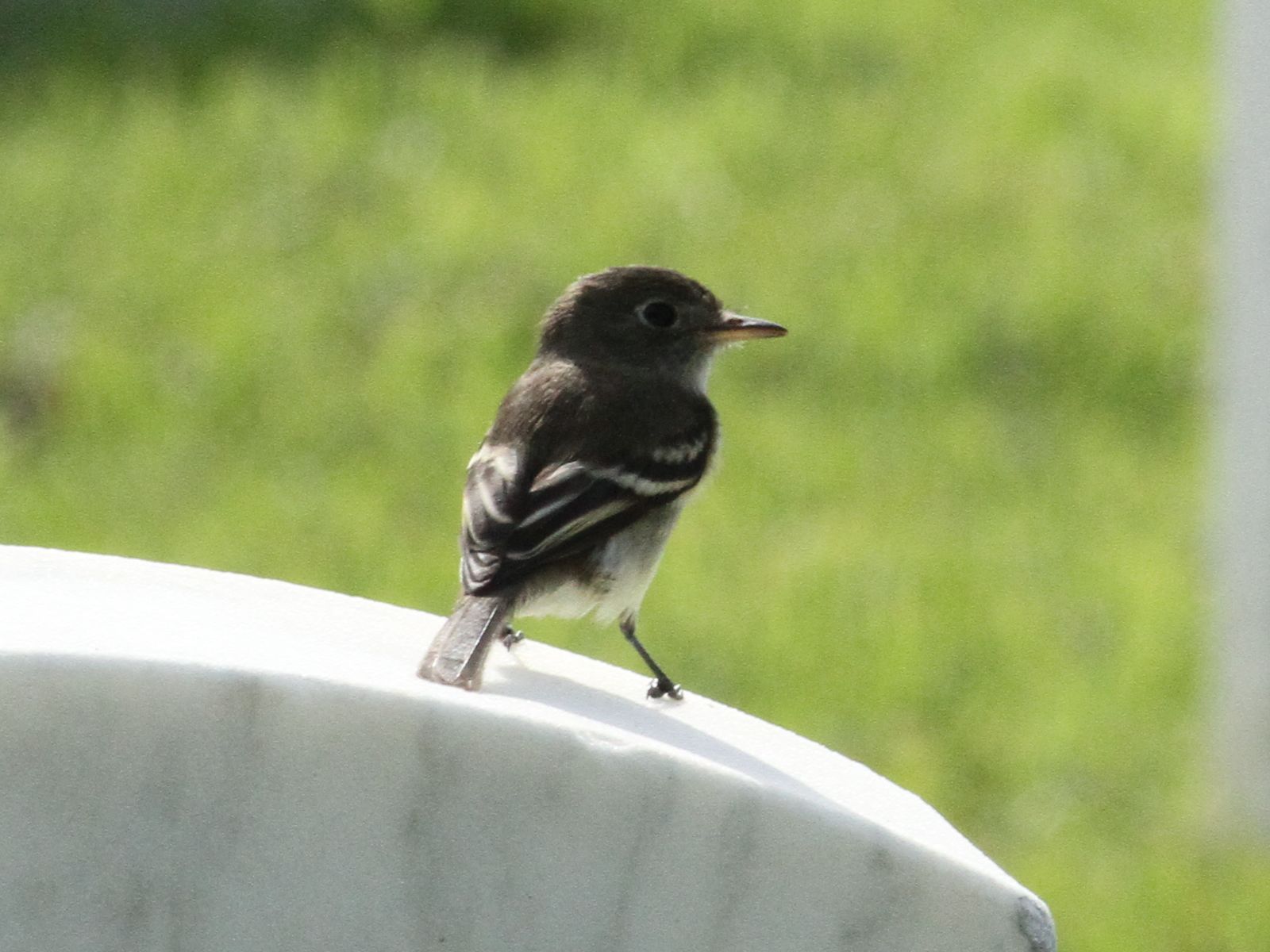
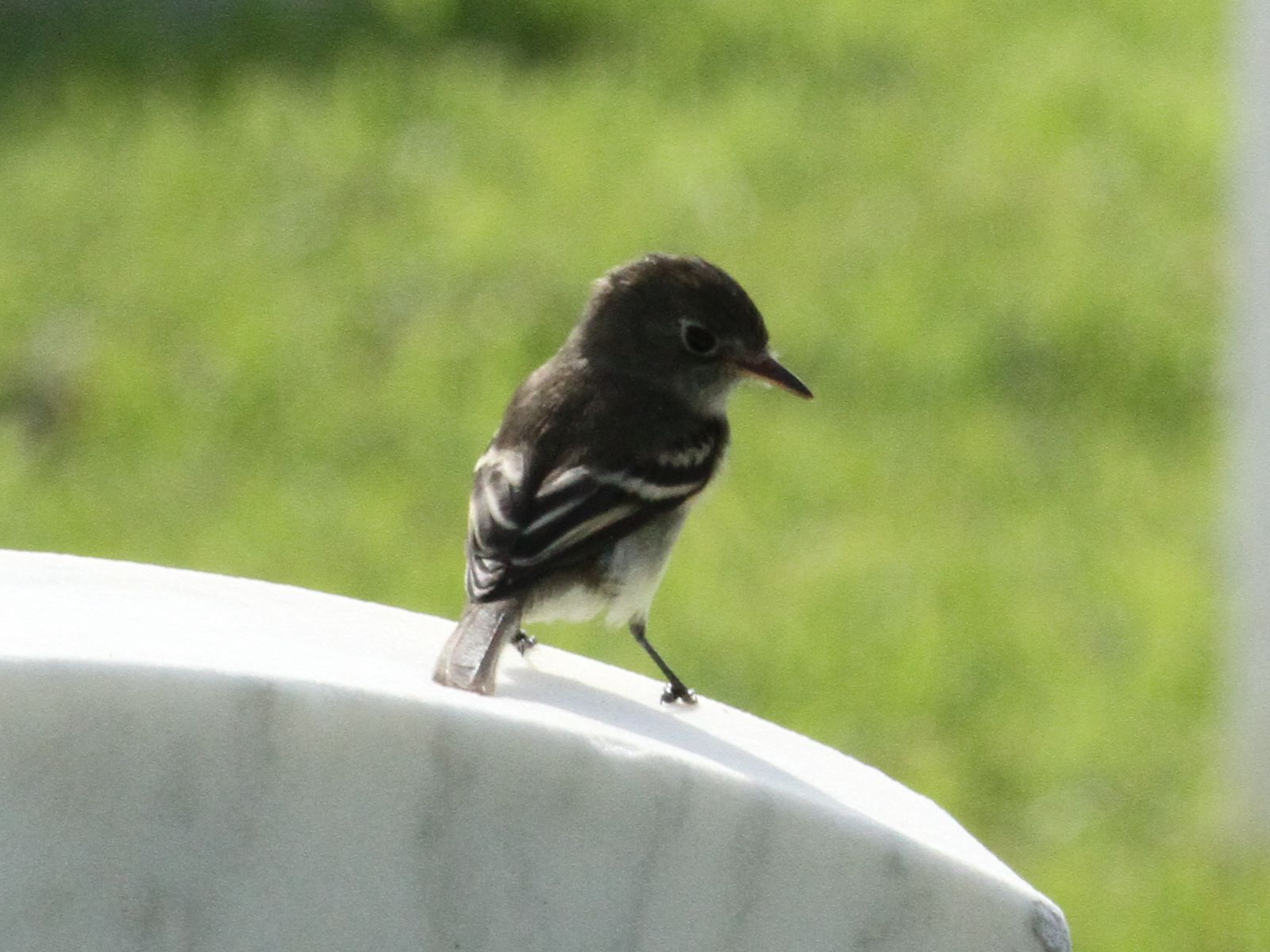
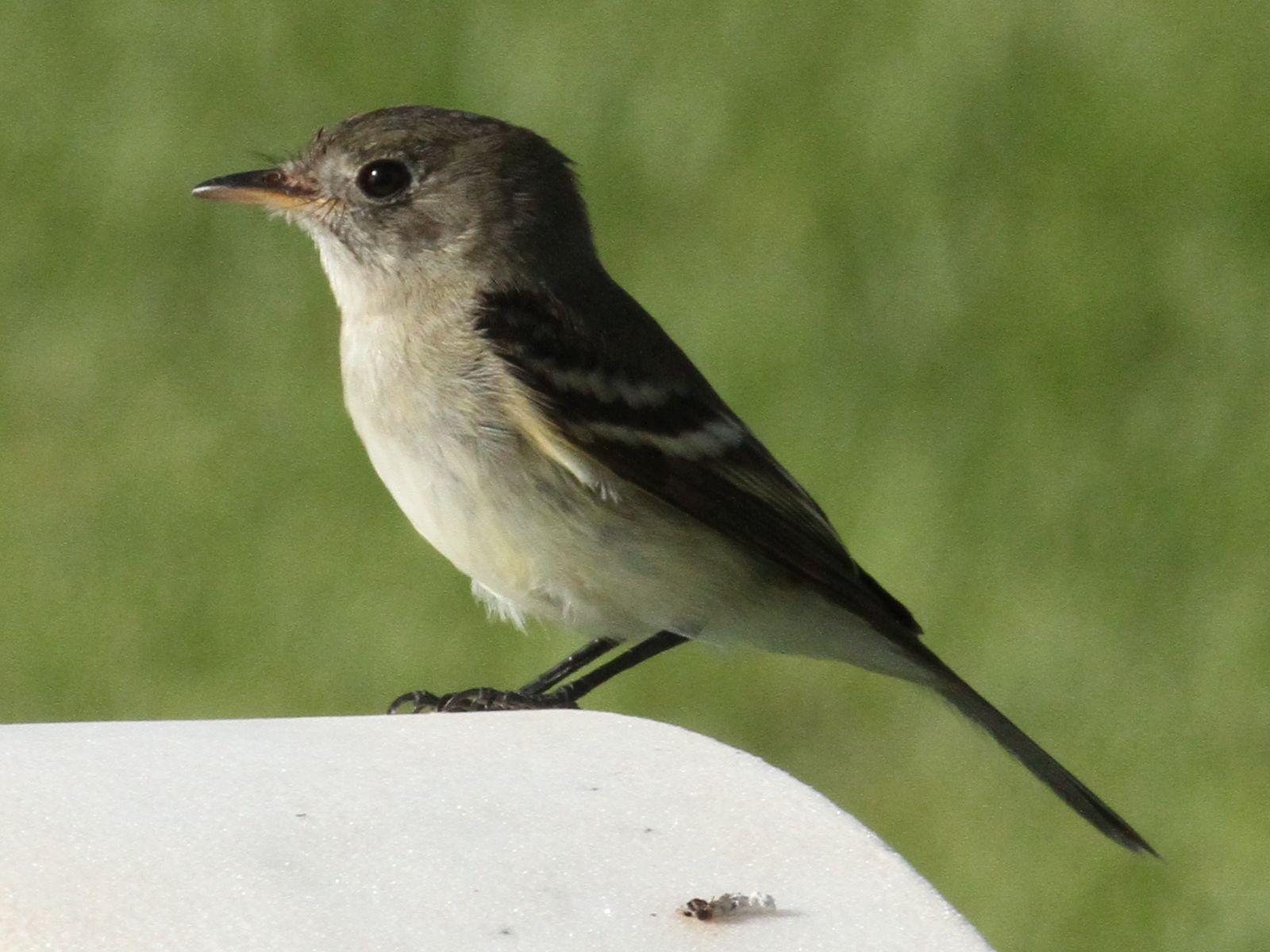
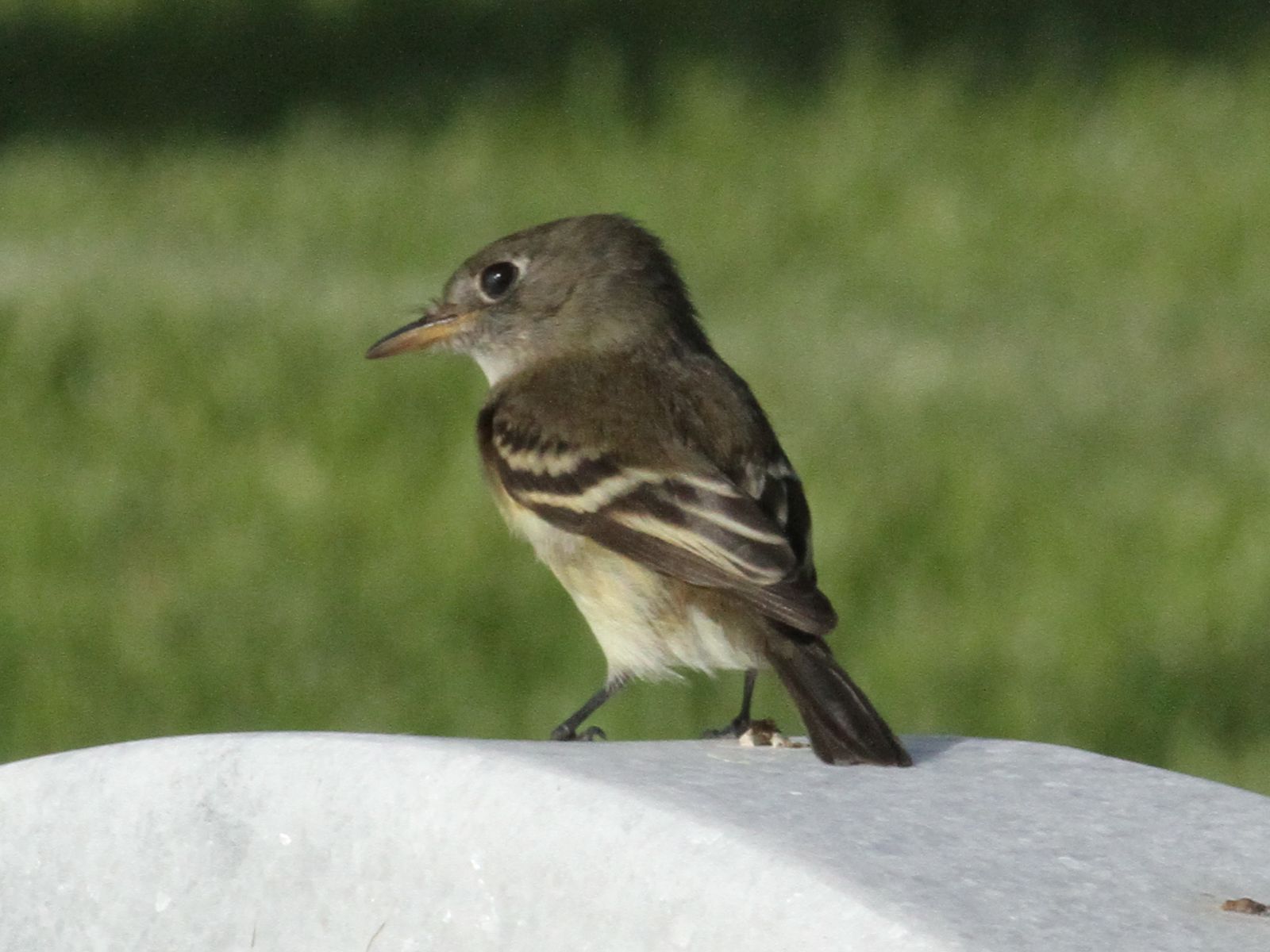
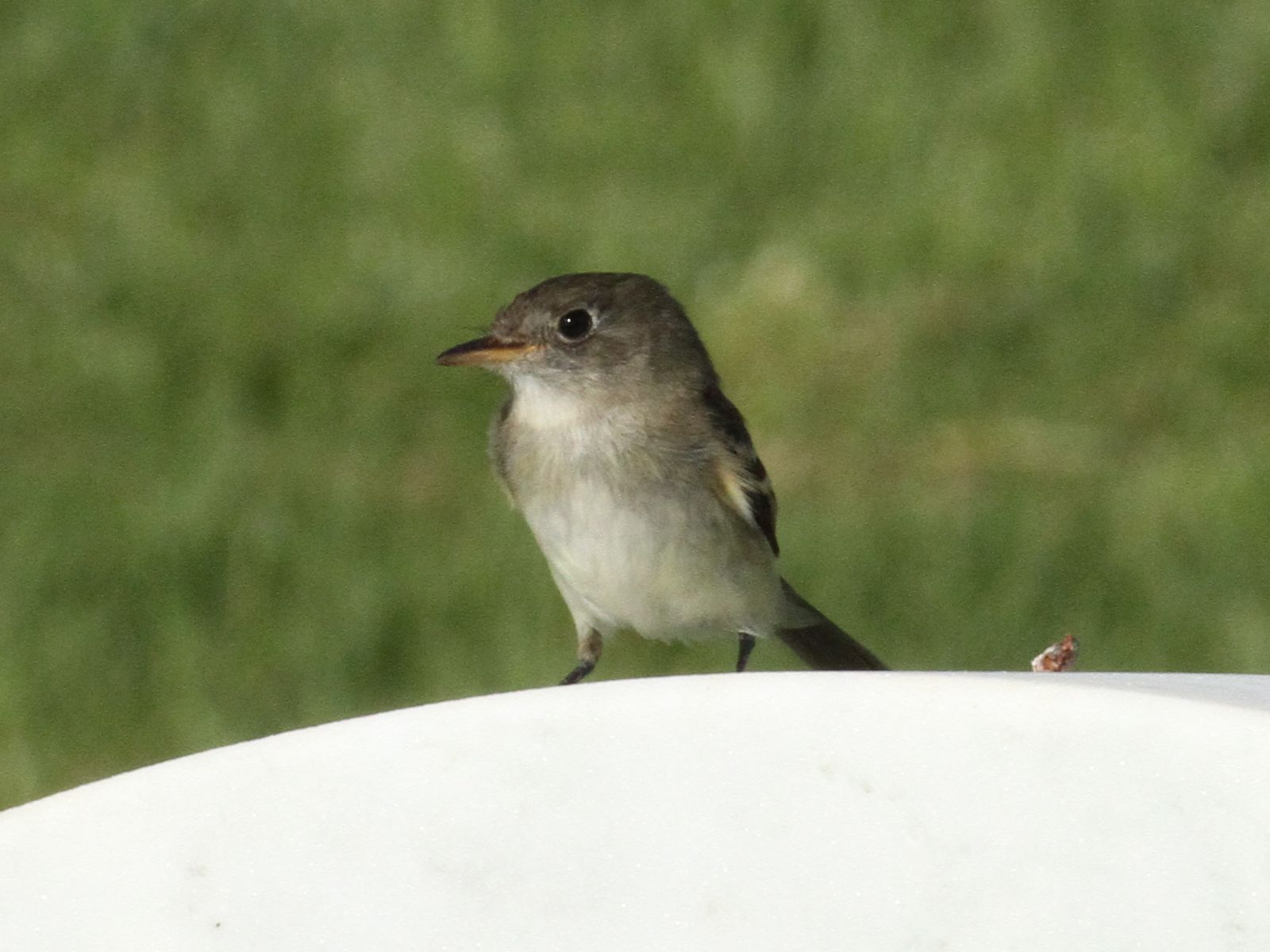

I might be considered crazy for suggesting this, but what about ALDER Flycatcher?? It just seems like the bill and head profile are not quite right for Least, but I agree that the brownish tone to the upperparts and high-contrast wing bars on blackish wings suggest an eastern empid. The eye-ring seems slight, broader than most Willows, but very narrow for much else. Just throwing it out there. I know it’s a tough call in the West.
Hi Dan, the option of Alder Flycatcher falls close to that of Willow Flycatcher, in terms of elimination. The eye ring is too strong really, with the extension or widening of the eye ring also at the rear of the eye. Alder should be a nice healthy greenish color. Most importantly I think the dusky tipped lower mandible points to a few choices only – Hammond’s, Dusky, maybe some Least. This is clearly not a Hammond’s Flycatcher which would have a much smaller bill and has a grey-headed plus yellower bodied appearance. Hammond’s also has a gray throat, unlike the whitish throat of this bird.
Gary,
#3,#4,#5 images are reminiscent of Willow Flycatcher with that forehead so flat. What do you think?
Hi Monte, the first photographs above show this bird has quite a good eye ring, with a little extension or widening of the eye ring at the rear of the eye. This really eliminates Willow Flycatcher which has none or just a faint thin eye ring. In addition Willow Flycatcher is a larger bird, it has a longer tail and short wings, giving it a long, tapered appearance. Also Willow Flycatcher has a full yellow lower mandible unlike the darkly tipped one of this bird. The ratio of head to body size in Willow looks more “normal” and pleasing to the eye than this bull-headed impish little flycatcher!